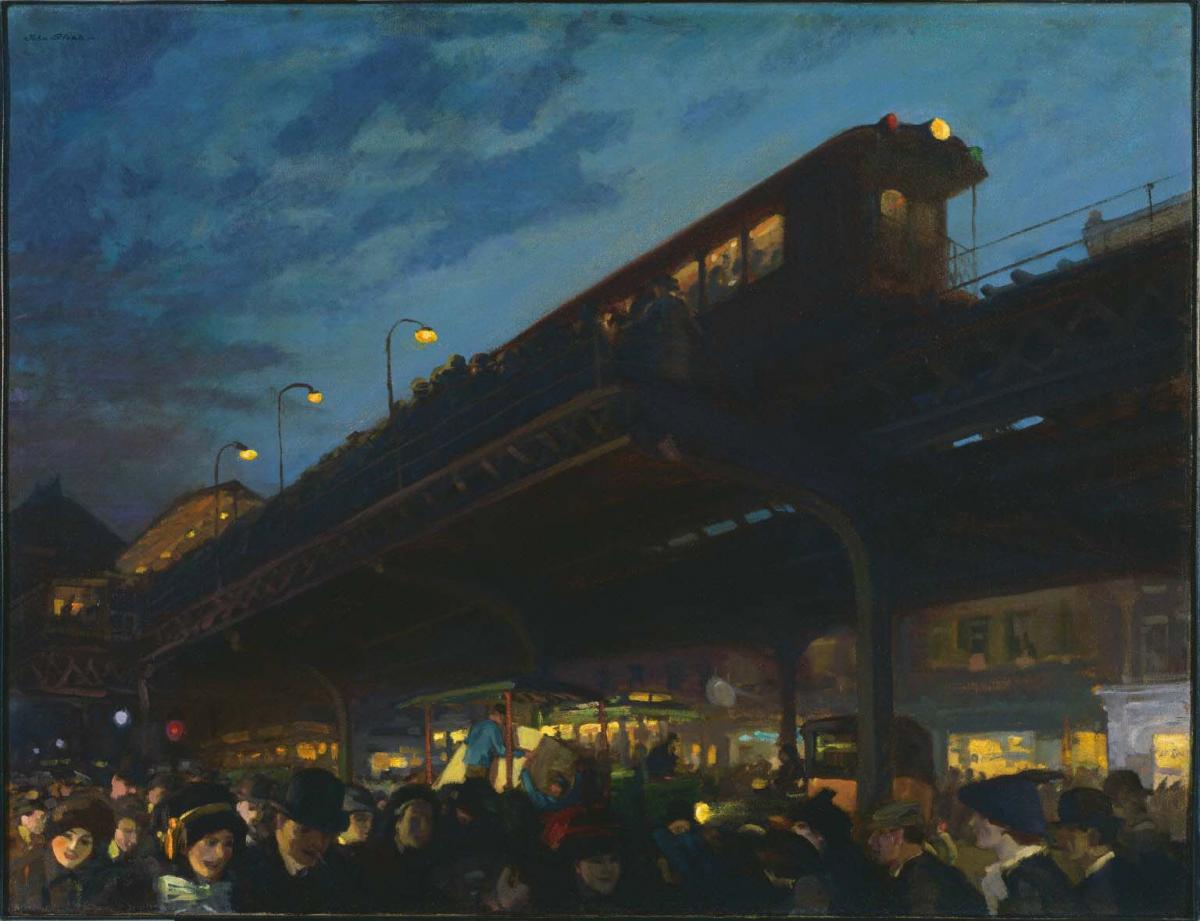Six O'Clock, Winter
John Sloan ( 1912 )

The subject of Six O’Clock, Winter—the Third Avenue El (short for “elevated train”) at the peak of the evening rush hour—reflects Sloan’s ability to catch the drama in everyday scenes. The shop girls, clerks, and working men and women who are massed in the lower part of the canvas seem absorbed in their own actions, rushing to their various destinations, generally unaware of the huge elevated railway looming high above them. Here, Sloan experiments with the effects of artificial lighting, depicting the crowd at dusk, the last rays of a winter sun visible in the sky. The figures are illuminated by the glow of the train’s electric lights from above and from the shops at street level, with those in the lower left of the composition cast in strong light. Loosely brushed in, the faces have a masklike appearance, while those on the right are almost hidden in shadow, obscuring their features.
The massive El, creating a dark diagonal sweep across the length of the canvas, threatens to burst out of the picture frame, but it is held in check by the vertical steel posts, which are seemingly anchored in the crowd. Silhouetted against an ice-blue winter sky, the waiting train appears even more powerful.
Duncan Phillips, who admired Sloan’s creative integrity and freedom from the whims of public taste, wrote in A Collection in the Making, “We ramble with [Sloan] by day and night—to Tammany Hall—to McSorley’s famous saloon—to ‘arty’ restaurants—to the six o’clock rush under the Sixth [sic] Avenue’s L [sic] at lamp-lighting time.”